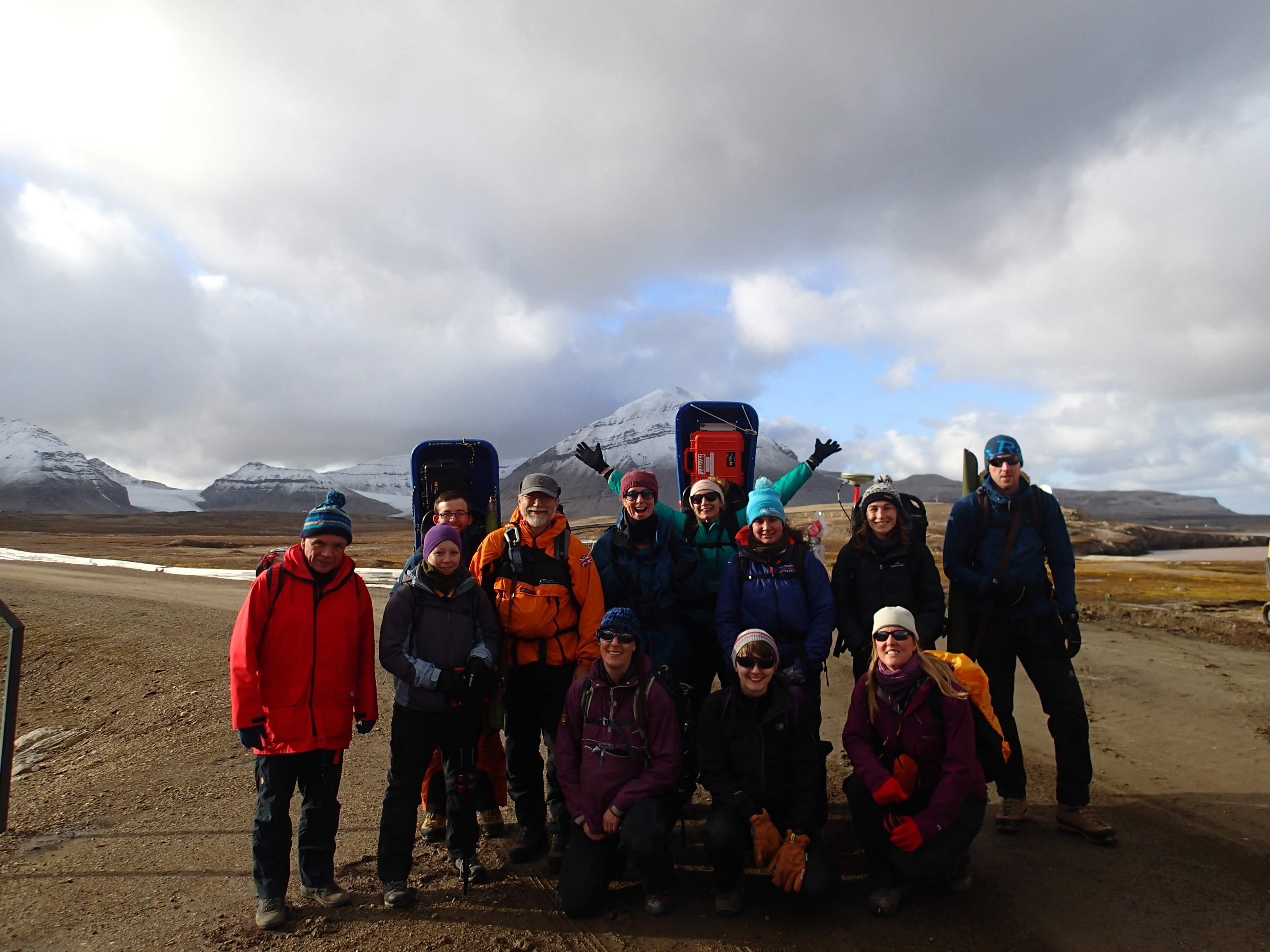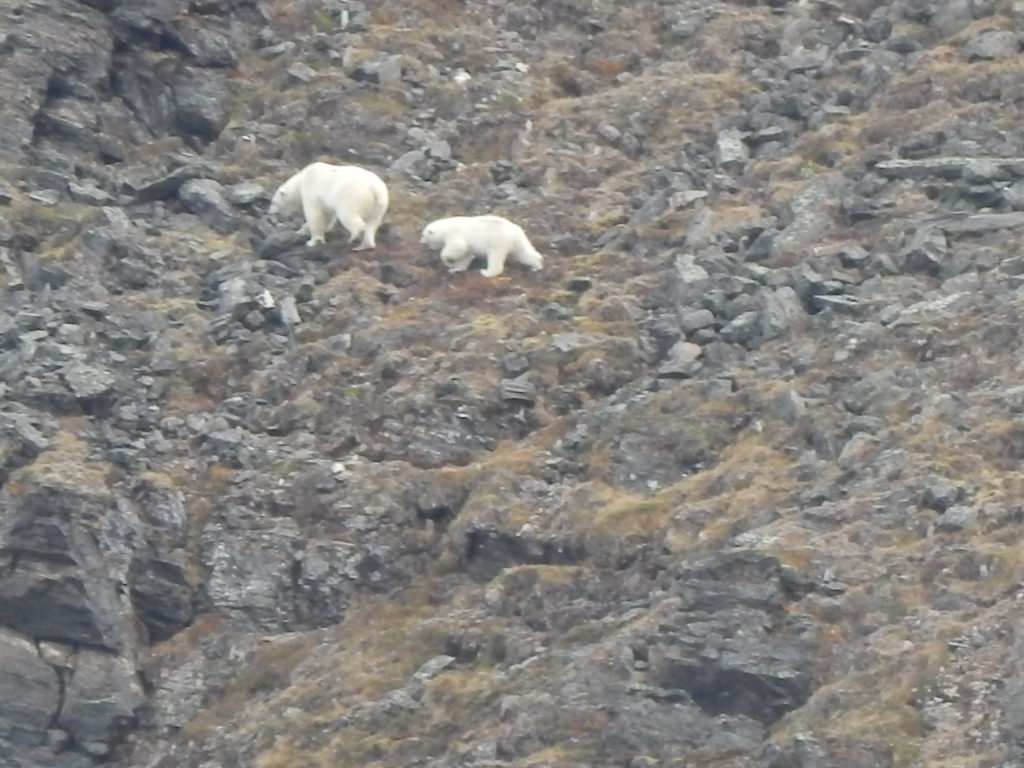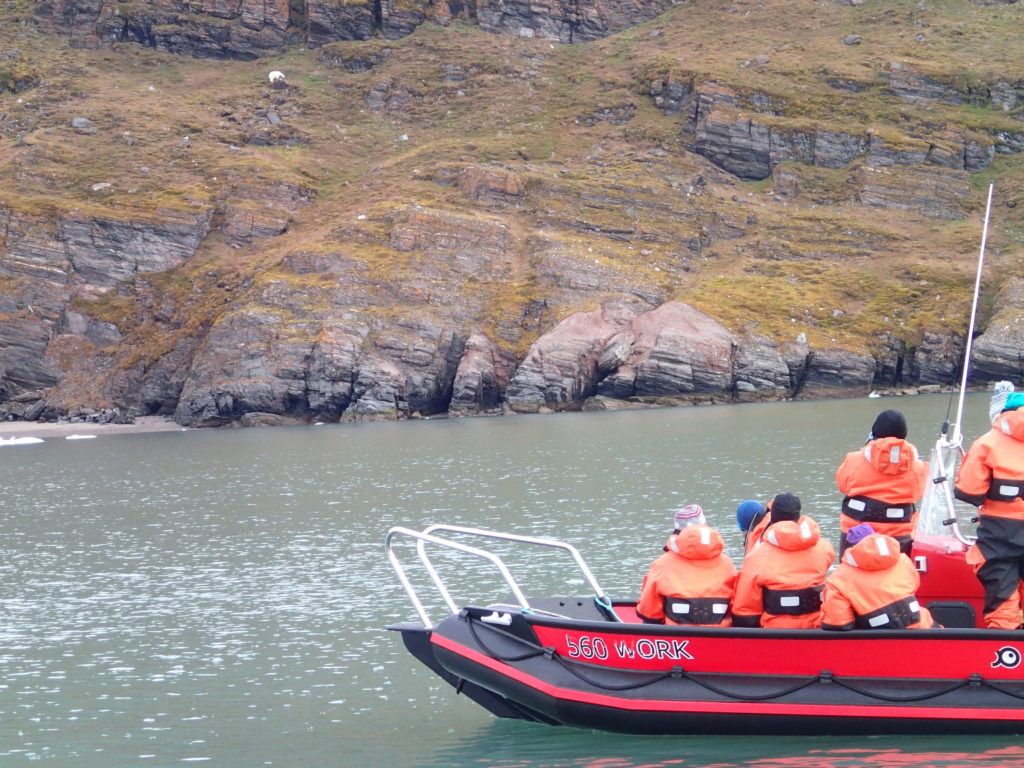I’m sitting upstairs inside the central hub in Ny-Ålesund, Svalbard – land of the midnight sun and the most Northerly permanent community on the planet. This fabulous, glass fronted room looks out onto Kongsfjord and its surrounding mountains and glaciers – simply stunning. Today however, the weather has stopped play. Rain is hammering down, half the fjord is hidden from view by mist and it’s blowing a hoolie. But the weather in itself is not the primary reason we can’t walk up to the glacier to carry out our science, but because of the weather, there would be no possibility of a boat back up and limited visibility should we encounter a polar bear in the field – and there are polar bears here.
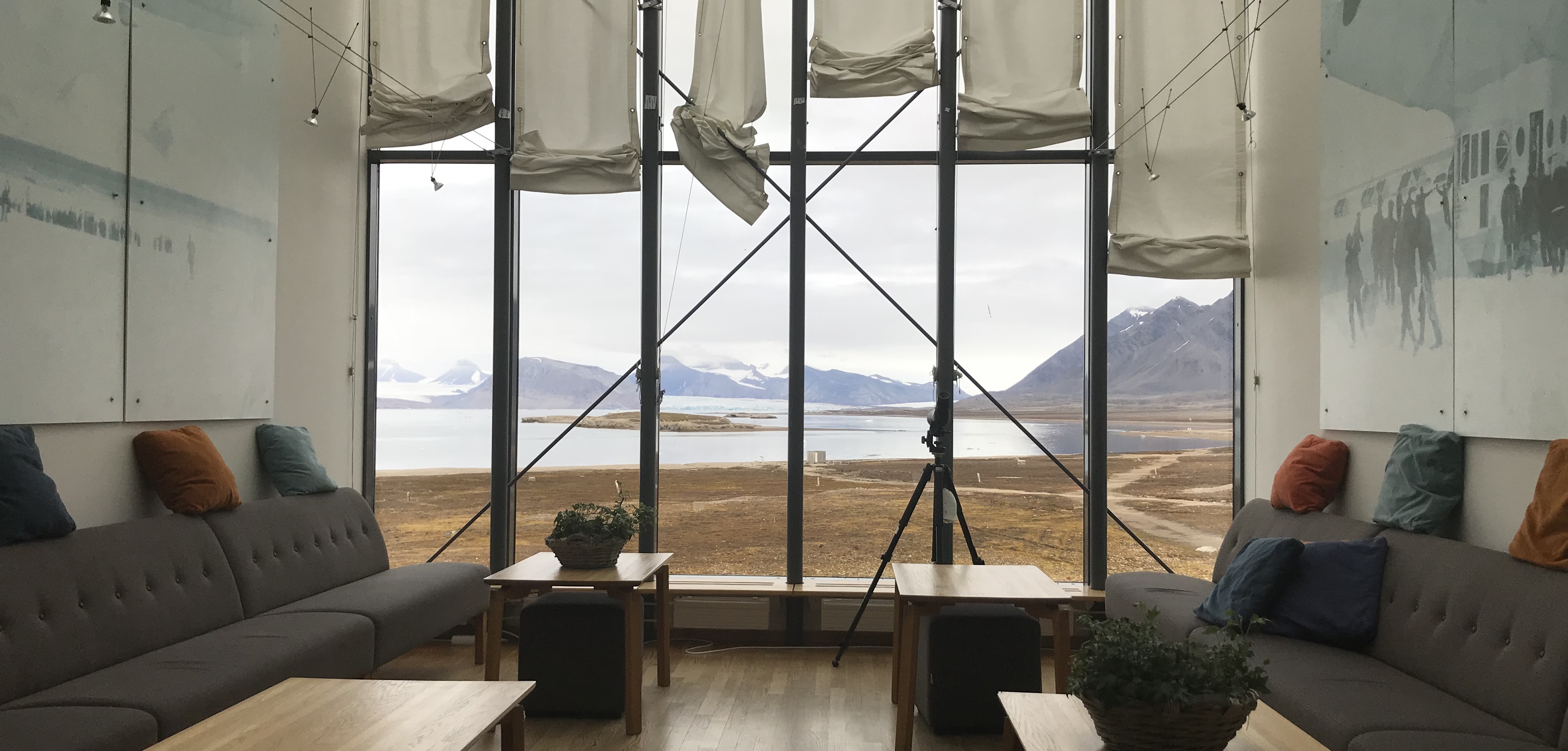
Ny-Ålesund is a small scientific research station located at the edge of the fjord in the north east of Svalbard in the high Arctic, at a latitude of 79°N. The town’s history dates back to 1916 where coal was mined until 1962, when after an explosion – the latest and most fatal in a string of mining accidents – 21 men lost their lives and the mines were closed. Science then began in 1962 and there is now a thriving international research community comprising science stations from 10 different nations and looked after by the Norwegian staff of Kings Bay.
I, and 8 other PhD researchers are here on a British Antarctic Survey (BAS) training course, learning how to conduct safe and effective field work in the Polar regions. We started out at BAS headquarters in Cambridge, with a combination of lectures from experienced Polar scientists from a variety of backgrounds, ranging from marine to geology, palaeontology and glaciology to hands-on logistical planning and GPS mapping. Carrying out fieldwork in polar environments requires a great deal of thought, planning and expense! Aside from the extreme cold & unpredictable weather, you will invariably be in remote locations where there are no shops to replace any broken kit and no quick response in the event of a medical emergency.
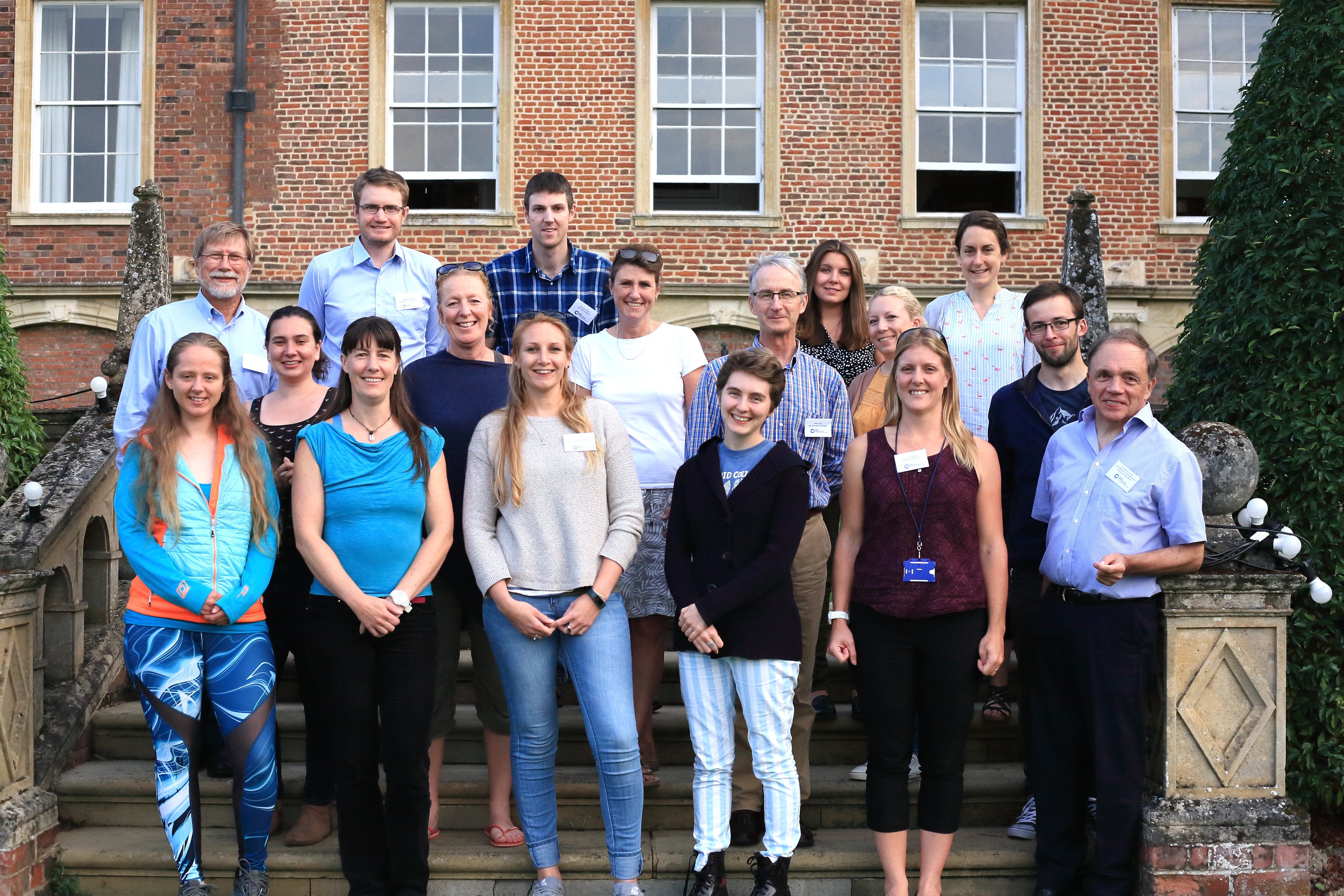
One of the key take home messages from this part of the course, was always to build in plenty of contingencies into your plan, because things will invariably not go to plan! This was highlighted before we’d even left Heathrow airport, when our flight to Oslo was delayed by 3 hours, causing us to miss our connecting flight to travel up to Longyearbyen, Svalbard. The next day was Saturday and guess what? There are no flights to Longyearbyen on a Saturday! We therefore had to spend two unplanned nights in Oslo before flying to Svalbard on Sunday. We therefore had a wonderful day exploring Oslo in the beautiful sunshine and got to visit the Fram museum of Polar exploration, which houses the restored ship “Fram” that transported Roald Amundsen to the South Pole, pipping Robert Scott to the post in 1911. On our arrival in Longyearbyen, we were greeted by mountains, a glacier, reindeer, Arctic terns and an Arctic fox – yep, it’s definitely feeling like we’re in the Arctic now!
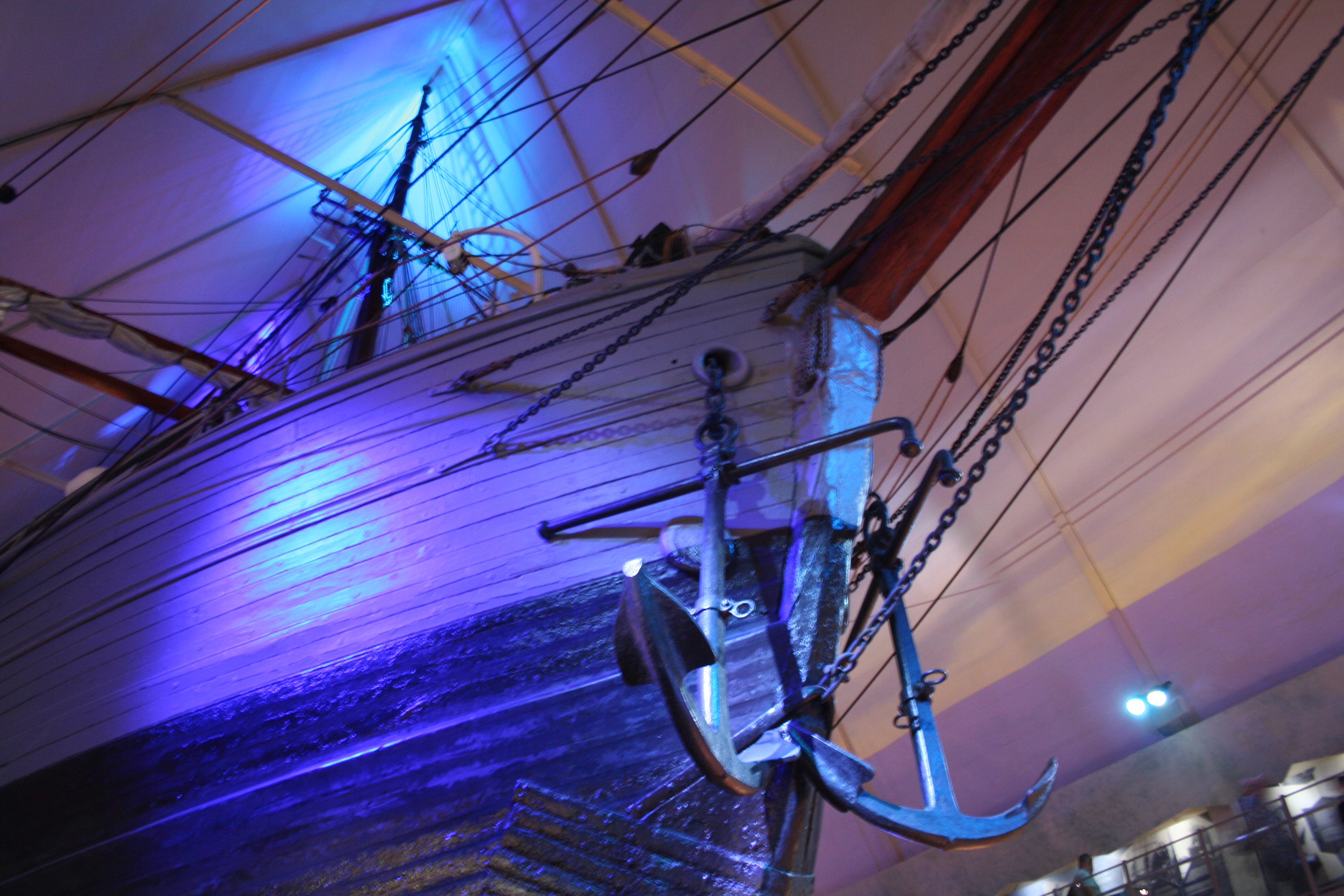
The following morning, we boarded a 14 seater, twin propelled airplane to take us up to Ny-Ålesund for 6 days of practical field work training – everyone had a window seat! Unfortunately, cloud cover restricted view during the flight but as we descended through the clouds, WOW! Breathtakingly beautiful scenery of snow-capped mountains, lakes, glaciers and fjords – what a thrill! The first day was spent undergoing safety and polar bear awareness training – understanding what the risks are when going into the field, learning bear behaviour & rifle training. It’s vitally important to be able to protect not only yourself and your team mates in the event of a bear encounter but also to try and protect the bear by trying to ward them off. Only when the bear leaves no other option and life is at risk would you shoot. Polar bears are protected in Svalbard, and any situation where a bear is killed is subject to scrutiny by the law. The rifles use .30 calibre bullets and the power is incredible. Firing the rifles at the firing range and learning where to aim if you needed to shoot a bear was incredibly sobering, I really hoped I would never have to shoot this gun this in the field.
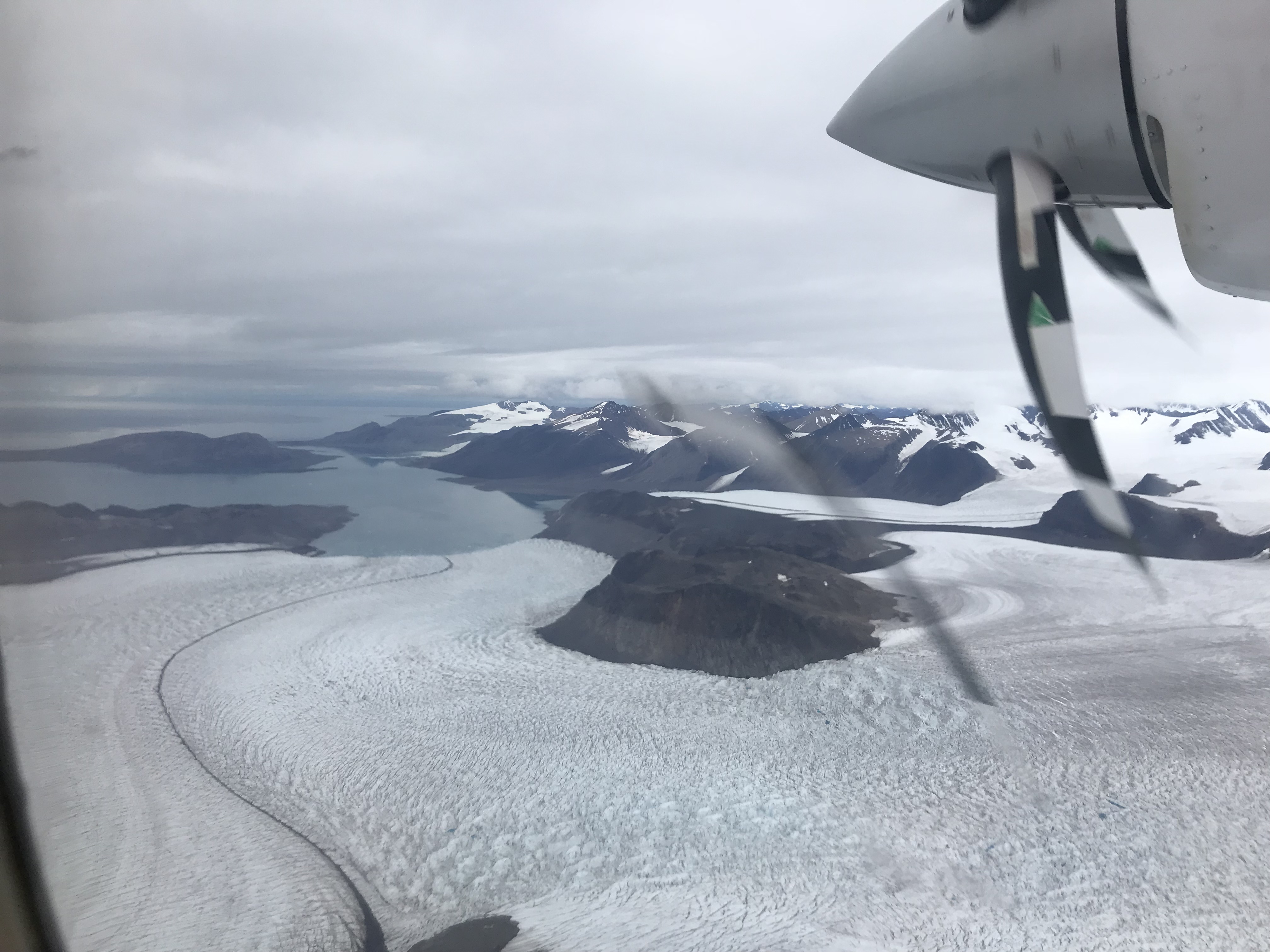
The following day, we split into 2 groups and took it in turns to carry out field work in the fjord on either a small Rib or a hard boat. Different methods were used to determine whether there was a difference in the abundance and diversity of life on the seabed at the foot of the glacier, which is subject to high sedimentation and fresh water runoff and near the head of the fjord which is more open and saline. On the hard boat, a winch was used to deploy a grab onto the seabed and we then sieved the sediment to remove any animals living within the seabed, such as worms and bivalved molluscs. Baited traps were deployed from the rib to catch mobile animals living on top of the seabed, such as fish, crabs and aquatic snails. We also collected the tiny animals living in the water column, the zooplankton community, by towing a plankton net from the rib and collecting the animals from the cod end – the fjord waters were teeming with life!
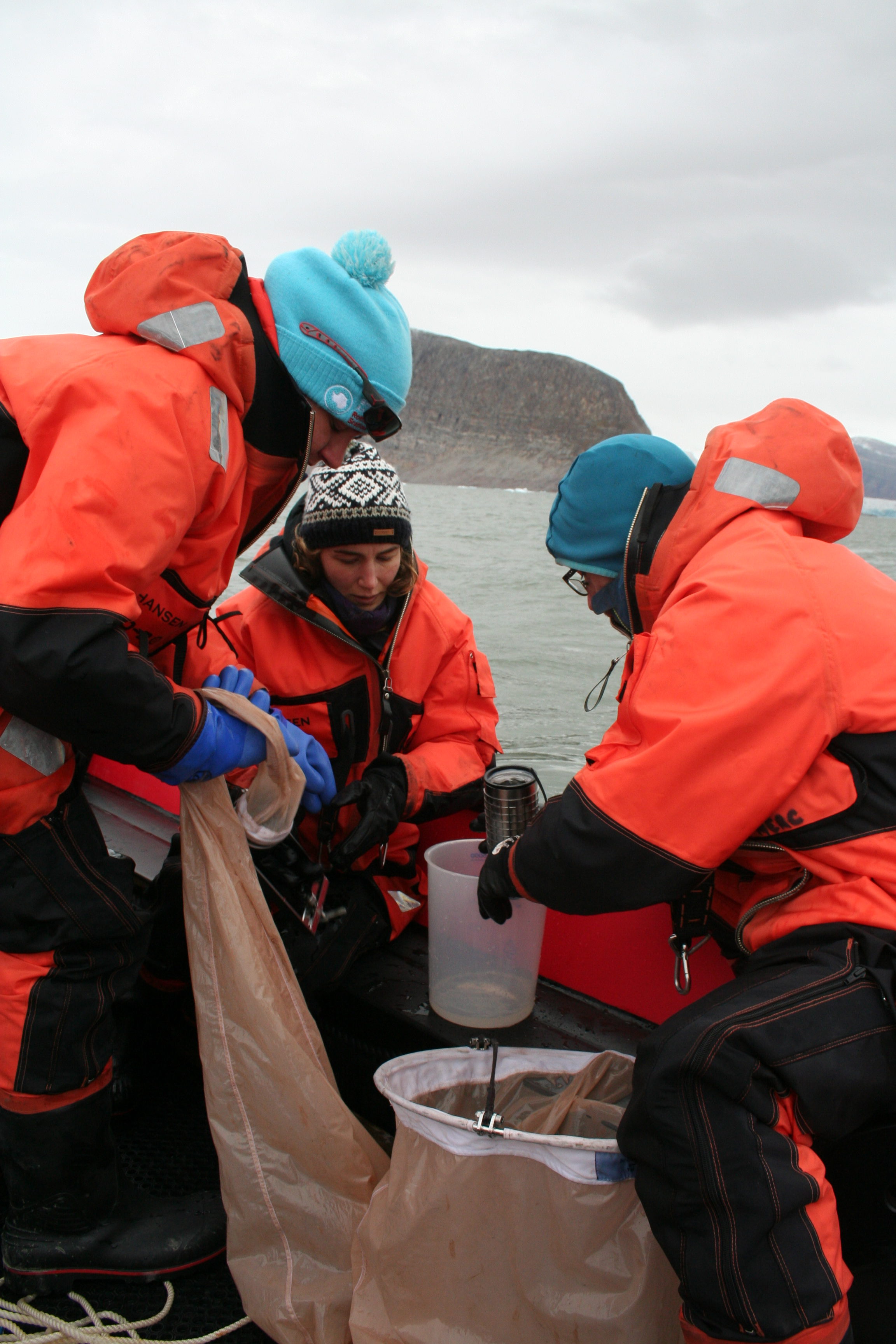
It was from the safety of the boats that we saw polar bears! On the mountain sides across the fjord from Ny-Ålesund station, we spotted a mother and her cub high up on very steep terrain. What magnificent animals these are and truly masters of their environment. We then spotted another bear, a lone male, wandering along the same cliff side lower down. Male bears are likely to kill a cub they encounter that they haven’t sired, so we all hoped he wouldn’t pick up their scent. The mother and her cub carried on in the opposite direction to the male, whilst the male moved down towards the water’s edge looking at us and sniffing the air to try and figure out what we were. An absolutely magical encounter of these wonderful animals in their environment, but also a stark reality check that these guys really could be encountered when we set out on foot to the glacier the following day.
As it happens, the weather came in and stopped our 2 hour hike to the glacier for radio survey work, determined too unsafe by the UK station officer (and all round lovely man!), Nick Cox, due again to the inability to pick us up by boat if we encountered the bears. So instead, we went for a shorter walk to some fossil beds, where we found fossils of leaves and corals (yes, in the same place!) in different rocks dating back 40 million years to the Eocene for the leaves and 300,000 million years for the coral. The rain became torrential and indoor activities were called for, looking at all the marine life we had collected over the previous few days.
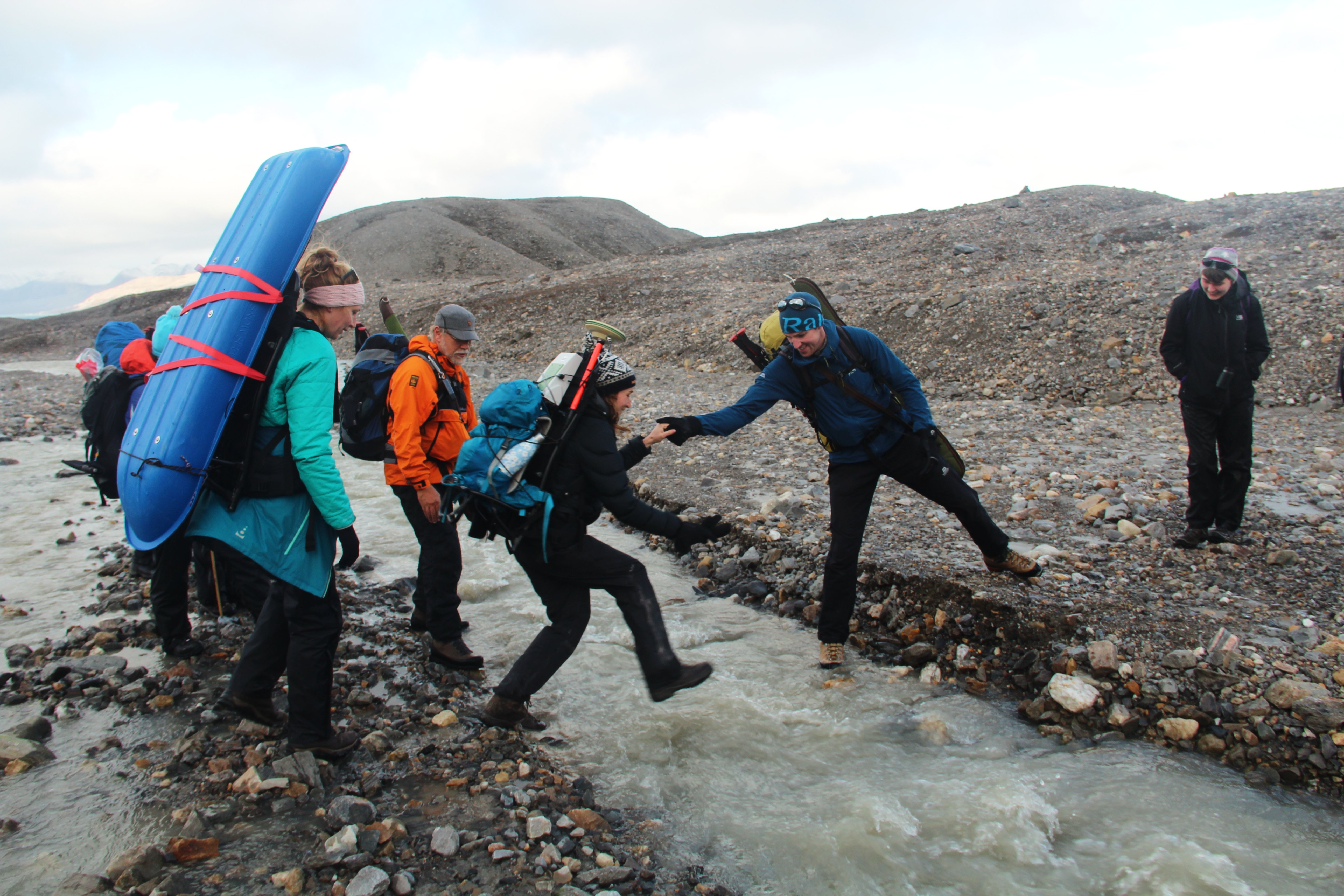
The next day, the weather began to lift and we set out after lunch to take all our glacial survey equipment to Midre Lovenbreen glacier, ready for radar survey work the following day. For a party of our size (9 inexperienced PhD students and 4 leaders), we needed 3 rifles, 5 flare guns, (used to scare the bears if they get too close), 3 vhf radios, 1 Iridium satellite phone, first aid kits, 3 GPS locators plus all the science kit needed to map the glacier and personal kit. The rain had caused lots glacial steams, requiring cautious crossing and causing soggy feet! The glacial moraines could provide perfect nap spots for big, white, fluffy animals so everyone had to be very vigilant whilst also crossing difficult terrain. The science equipment was stowed for the following day and we returned to station along the beach.
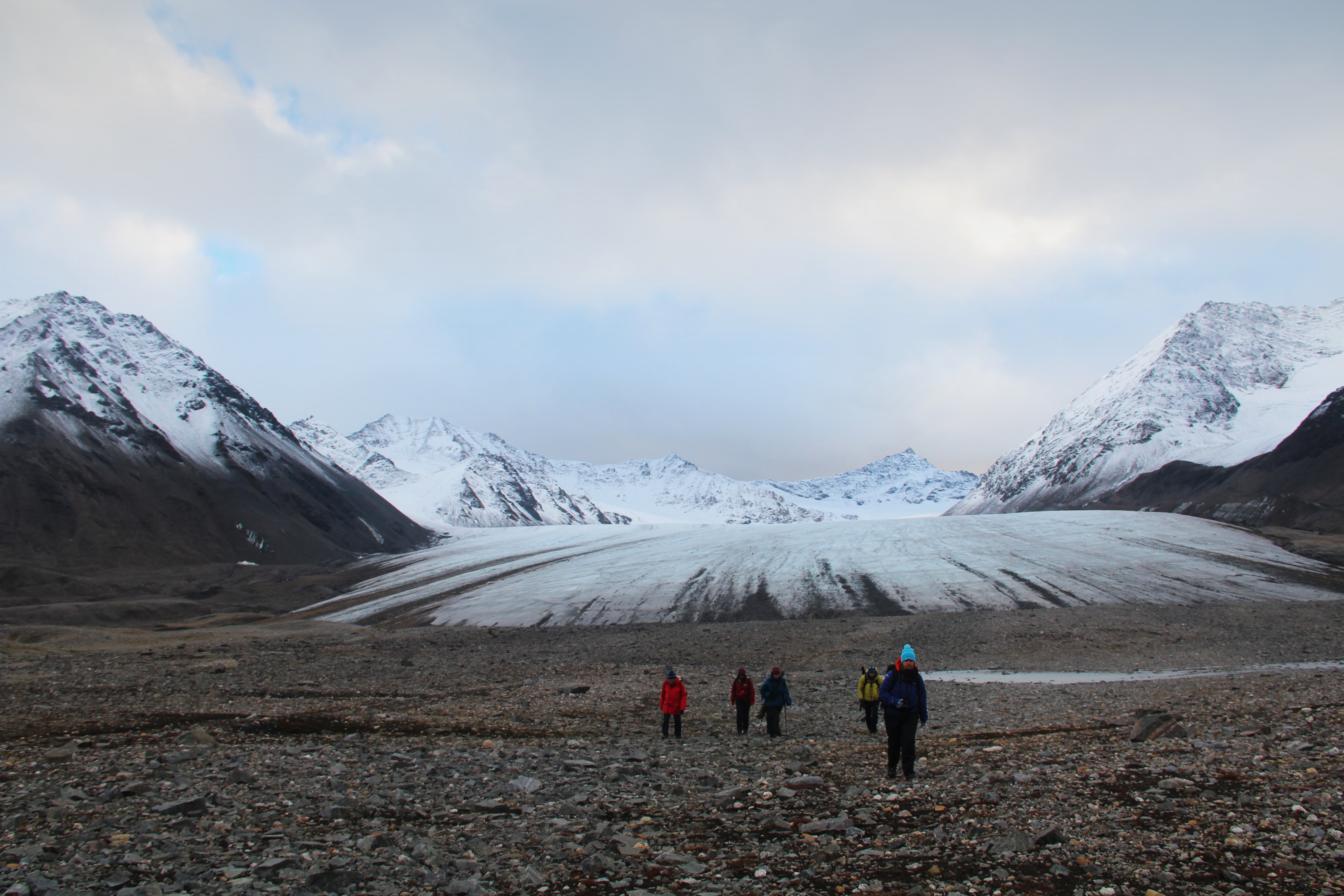
So now we’re back to the beginning. I’m sitting looking out across the fjord and it’s still persisting down. This wetter, milder weather is a worrying trend in the Arctic, which is warming faster than anywhere else on the planet. Permafrost is being lost and total ice extent is declining year on year. And it’s not just the Arctic that is suffering; the changing Arctic is affecting weather patterns globally. The science carried out here at Ny-Ålesund is vital to understand what is happening and make predictions about the Arctic future.
We are due to fly back to Longyearbyen tomorrow then onto the UK. But as a month’s worth of rain has fallen in just 2 days, the runway is too wet and we’re being taken by sea by the Norwegian Navy! This training course has been an absolute pleasure and has provided us with a foundation in what considerations are needed when planning Polar fieldwork – first and foremost, to expect the unexpected and be very flexible in your arrangements! I feel truly privileged to have had the opportunity to spend time in this wonderful environment with such inspiring and dedicated people, so a massive thank you goes out to everyone involved in putting together this course and especially to Ali Teague, Ed King, Alistair Crame, Terri Souster and to Nick Gillet from BAS for your patience, dedication and teaching and to Nick Cox, BAS UK station officer for keeping us safe and regaling us with your stories! Now to start writing grant proposals so I can come back, if you’ll have me?!
By Rachel Coppock, PhD Researcher, Plymouth Marine Laboratory & University of Exeter
